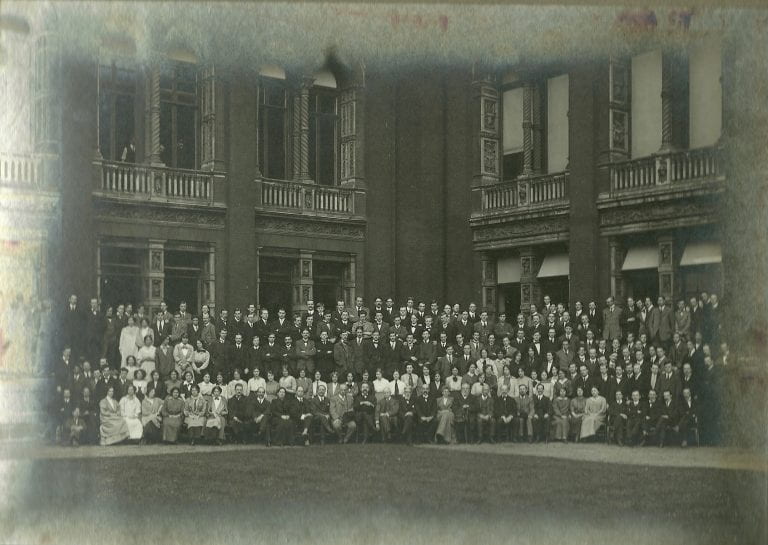
In the decade before what was simply referred to in those days as ‘the War’, the Royal College of Art retained its main focus on training students to become highly capable art school teachers, while encouraging the development of technically competent (if not necessarily adventurous) artists and designers.
Applicants, then as now, came from a wide variety of backgrounds: British, European and the Empire, professional, trade and skilled. Many had attended a local authority technical or art school first, whether in a county town, or, more likely, an industrial centre such as Manchester or Birmingham.
Time and again their ability had already been recognised, with the thriving local press of this period reporting the award of significant regional prizes – especially emphasising this achievement when announcing the gaining of a place at the College. This was obviously a proud moment for the community.
Each academic year was divided into two terms. After a first year devoted to architecture, calligraphy and basic design concepts, College students were offered an additional three broad disciplines. These were sculpture and modelling, decorative and mural painting, and design (meaning a wide range of crafts). The aim for a student was to be granted a diploma and become an ‘ARCA’: an Associate of the Royal College of Art. Reports of progress in individual files (where they survive) are usually brief, either suggested in a listing of various exam results, or, sometimes, just one word such as ‘good’, ‘satisfactory’ or ‘poor’. Perhaps this was enough information. The College’s intake was small, so everyday contact may have been what mattered at the time, unless something dramatic occurred.
This feeling of a community becomes apparent in documents as the war took hold, and the necessary formalities of running an institution were affected. There are several instances when a worrying absence from the studio is only explained when an apologetic student succeeds in writing from an army encampment. In the early days there are also excited letters from students to the Registrar, Cyril D. Fitzroy, about ‘strenuous’ training. These make clear the latter was a familiar figure to them, with at least one sending best wishes on hearing he had been ill. And, of course, professors such as Arthur Beresford Pite (Architecture) must have experienced the same feelings of all those with sons of military age, when his own, Ion (also a student) left to serve.
In the summer of 1915 the Board of Education wrote to the Registrar, on behalf of the Treasury, asking for information about attendance. He replied with a table for two sessions, with 1913/14 showing a total of 204 students, with figures supplied for 1914/15 revealing a small reduction to 195, but making it clear he did not expect more than 130 in the coming academic year. He also noted that more than 30 (male) students in the previous year alone had joined up. Numbers of attendees, however, continued to fall to just 110 students (68 men and 42 women). Economies had to be made, some vacant staff posts were unfilled and student awards were deferred pending the end of their war service. The sting in the tail, however, came in a statement following the totting-up of savings to be made, with a not unreasonable prediction that ‘a fair proportion’ of these will not resume their studies.

